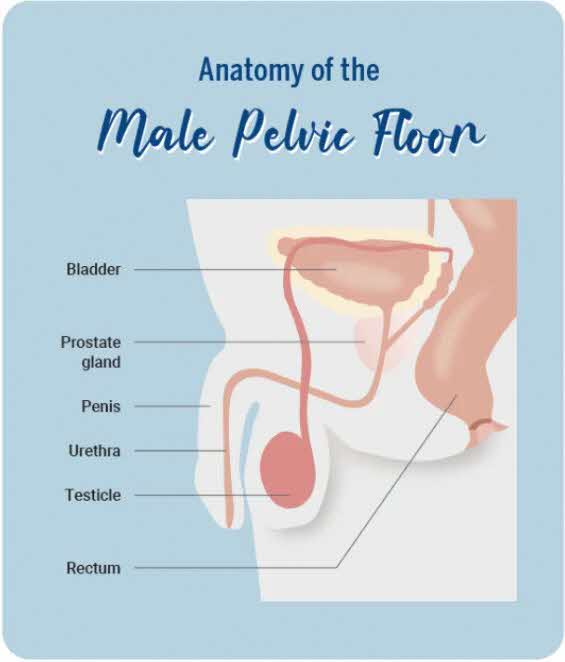Latest findings on prostate cancer
Destigmatising the disorder of prostate cancer, the second-most common cancer in men worldwide
Partner content: Content has been reproduced with the permission of, and is wholly owned by Parkway Cancer Centre. Great Eastern does not own or claim to own any rights to the content shared.
Prostate cancer is a malignant tumour that grows in the prostate. The prostate is a walnut-sized gland found below the bladder in men. It is important for reproduction, because it supplies part of the seminal fluid (semen), which mixes with sperm from the testicles. Seminal fluid helps the sperm to travel and survive.

Advancements in medical technology
Over the years, there have been several developments in medical technology that can improve prostate cancer screening and treatment of localised prostate cancer. Here are some notable advancements:
- Multiparametric MRI (mpMRI): mpMRI combines multiple imaging techniques to provide detailed images of the prostate gland. This technology can help identify suspicious areas in the prostate, guiding targeted biopsies and improving the accuracy of prostate cancer detection.
- Fusion biopsy: Fusion biopsy combines magnetic resonance imaging (MRI) with real-time ultrasound, providing a more accurate and targeted approach to prostate biopsy. By overlaying MRI images onto live ultrasound images, fusion biopsy helps to guide needle placement to specific areas of concern, thus improving diagnostic accuracy.
- Robotic-assisted surgery: Robot-assisted surgery enables surgeons to perform minimally invasive prostate cancer surgeries with enhanced precision and control. This technology allows for smaller incisions, reduced blood loss, and faster recovery times for patients.
- Proton therapy: Proton therapy is a very precise form of radiation therapy used to treat prostate cancer. It is a highly targeted treatment that destroys cancer cells in the prostate while reducing the radiation exposure to the bladder, rectum, and other gastrointestinal organs.
New treatment approaches
Several novel treatment approaches have emerged for managing advanced prostate cancer in recent years. These approaches aim to improve patient outcomes by offering more personalised and targeted therapies.
- Hormonal therapy: Male hormones, specifically testosterone, support the growth of prostate cancer. By reducing the amount of testosterone in the body, the growth and spread of prostate cancer can be slowed. Many new forms of hormonal therapy options are available to suppress production of testosterone and thus help to control the growth of prostate cancer cells.
- Targeted therapy: With advances in genomic sequencing of prostate cancer, medical oncologists are better able to guide treatment choices for our patients. We often analyse biopsies or circulating tumour DNA to determine actionable mutations. Based on these findings, patients may benefit from a more tailored treatment. For tumours with BRCA (BReast CAncer Gene) or DNA repair alterations, we use an oral targeted therapy called PARP inhibitors.
- Immunotherapy: Immunotherapy harnesses the body's immune system to recognise and destroy cancer cells. Drugs such as immune checkpoint inhibitors have shown promise in the treatment of advanced prostate cancer, particularly in patients with specific genetic mutations in the mismatch repair genes.
- PSMA (Prostate Specific Membrane Antigen) targeted therapy: PSMA-targeted therapy targets a specific protein-PSMA-that is highly expressed on prostate cancer cells as it delivers radiation directly to the cancer cells. The benefit of PSMA-targeted therapy is that it only targets the high levels of PSMA in prostate cancer cells. This reduces the damage done to other healthy cells in your body.
These new advancements will give doctors a broader array of tools for diagnosis and treatment, potentially improving patient outcomes by tailoring treatments more precisely. Patients can expect less invasive and less toxic treatment options.
Destigmatising prostate cancer
Tackling prostate cancer does not simply stop at diagnosis and treatment; we also have to address the stigma that has long surrounded the consequential disease.
To start, healthcare professionals educate patients by providing accurate and evidence-based information to patients about prostate cancer. When patients have a thorough understanding of the disease, myths and misconceptions can be dispelled. Since stigma often arises from societal stereotypes associated with prostate cancer, factual information can challenge such stereotypes, slowly reshape societal attitudes, and reduce stigma.
Healthcare professionals also actively engage with communities through workshops, seminars, and support group meetings. These events provide opportunities for open discussions about prostate cancer by addressing misconceptions, answering questions, and providing accurate information. Community engagement helps to break down barriers, reduce stigma, and promote a better understanding of the disease.
Healthcare organisations and advocacy groups have also launched public awareness campaigns to educate the general public about prostate cancer, its risk factors, and the importance of screening. For instance, November is recognised as the Prostate Cancer Awareness Month in Singapore. During this month, various organisations like Singapore Cancer Society will conduct awareness campaigns and educational events to promote early detection, screening, and overall prostate health.
Towards a better understanding of prostate cancer
As more findings are made, we are confident that we are on the right path towards better patient outcomes. Other than treatment and diagnosis, the healthcare sector is also focused on reducing the stigma surrounding prostate cancer.
This will greatly help in debunking myths and misconceptions that the public have and also improve the quality of life for those affected by the disease.
Stay protected with our health insurance plans.
Let us match you with a qualified financial representative
Our financial representative will answer any questions you may have about our products and planning.









